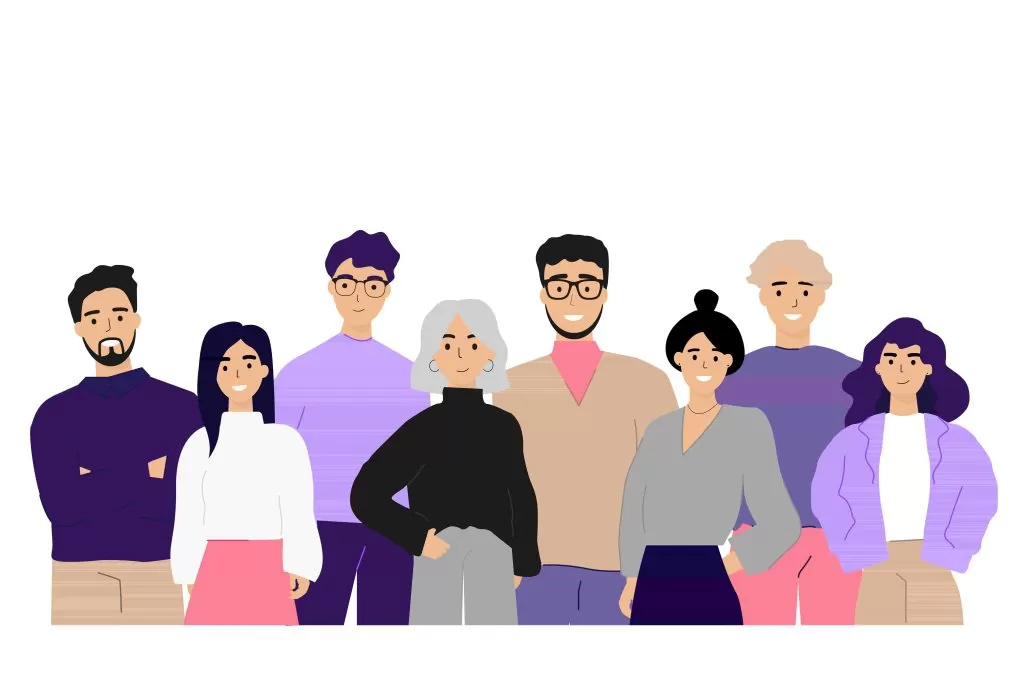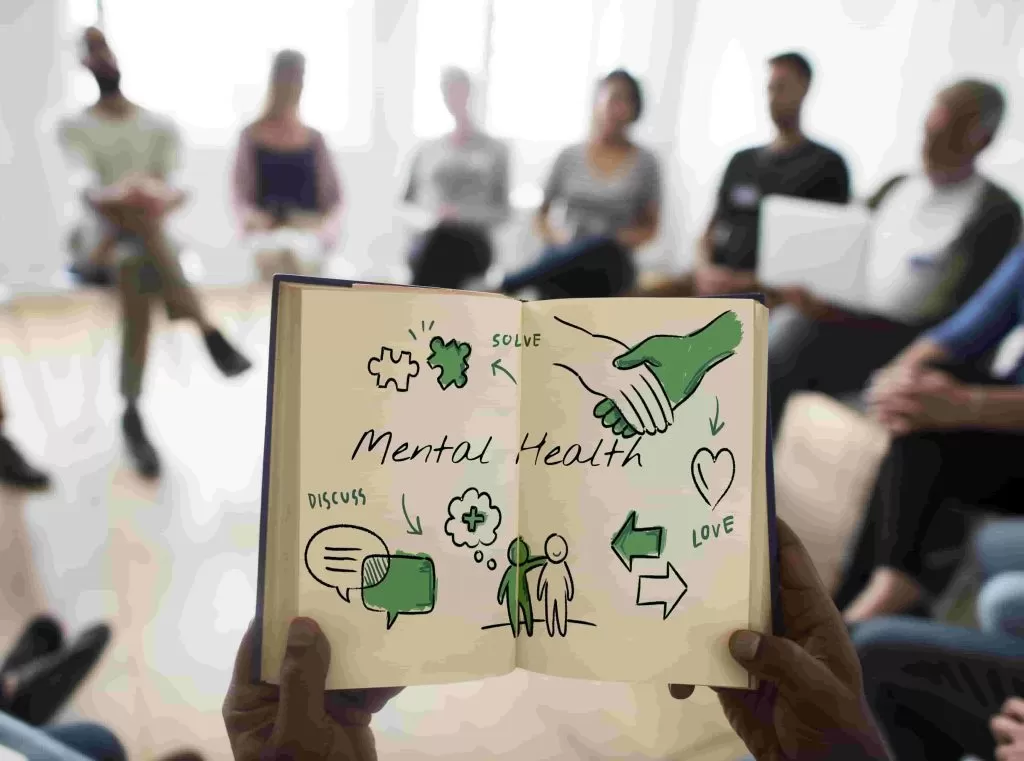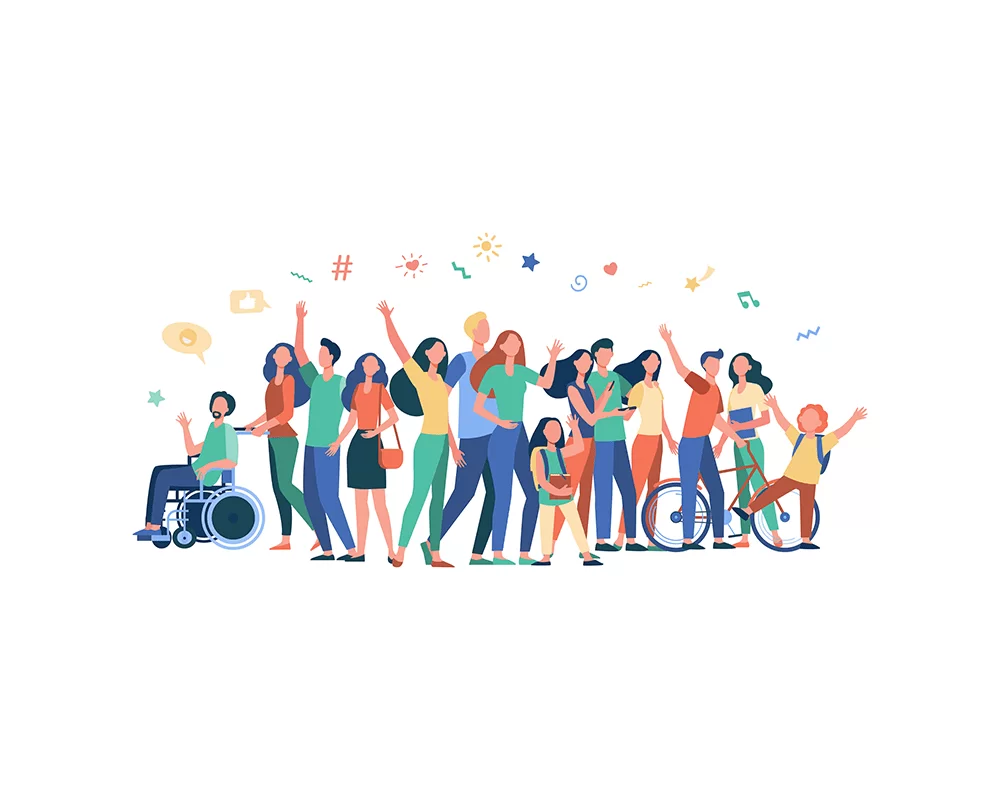Society and mental health are interwoven. Our social environment shapes our mental health and can have a significant negative effect on it. From the pressure to fit in, to the chances we have to succeed, how we talk to others and the help we can get, our society can have a big impact on how we feel mentally. It is impossible to overlook how society affects our mental health, whether it be through stress brought on by societal pressure or a lack of access to mental health facilities.
In this article, we’ll discuss the unexpected connection between society and mental health and how our surroundings can either support or undermine our mental health. Understanding this relationship will enable us to work toward creating a society that supports our ability to look after our mental health and find happiness in all aspects of our lives. This can be accomplished by promoting good stress management techniques and ensuring that everyone has access to the mental health care they require. We can work toward a future where everyone’s mental wellness is valued and supported by recognizing the significant role society plays in it.

What is the relationship between social and mental health?
There are numerous connections between society and mental health. People’s feelings and perspectives of themselves are influenced by society. Society has standards and ideals for how people should act and behave. People may experience sadness, worry, or tension if they don’t adhere to these principles and ideas. For example, society says that people should be successful, do well in school, and be perfect. If someone can’t meet these expectations, they might feel like they are not good enough. This can cause mental health problems like anxiety and depression.
In addition, a person’s mental health may be harmed by poverty, social injustice, and a lack of access to mental health resources. Society’s negative effects on mental health can be made worse by the stigma associated with mental illness, which discourages people from seeking treatment and support for their condition.
On the positive side, a person’s mental health and well-being can benefit from having strong community ties and access to mental health resources in a number of ways. A strong social support system of friends and family can provide one a sense of community, lessen loneliness and isolation, and provide emotional support. The ability to regulate one’s mental health, lessen the symptoms of a mental illness, and enhance general wellbeing can be achieved by people who have access to mental health resources like treatment, counseling, and support groups.

Television, movies, newspapers, and social media are just a few examples of how the media may significantly influence how society views mental health and mental illness. The public can be informed about mental health concerns, myths and misconceptions can be debunked, and stigma can be lessened by using the media. Positive and truthful portrayals of mental health can inspire individuals to seek treatment when they need it, promote awareness and acceptance of mental illness, and lessen the stigma and embarrassment frequently connected with mental health problems. The media can contribute to the development of a more tolerant and helpful atmosphere for persons dealing with mental health issues by raising awareness and lowering stigma.
Different Social factors affecting mental health
There are numerous factors affecting mental health, some of them are as follows:
1. Socio-economic Status
The social and economic circumstances in which people live, or socioeconomic status, can have a profound effect on mental health. Social inequality, a lack of access to resources, and low income, unemployment, and poverty all increase the likelihood of mental health issues. People who are poor, for instance, could experience more stress and problems in their daily lives and might not have access to enough mental health facilities or assistance. This may lead to poor mental health and wellbeing, a diminished capacity to handle stress and adversity, and other negative effects. In addition to ensuring that everyone has access to resources and support for their mental health, society must address poverty and social inequality.

2. Stigma and Discrimination
Stigma and discrimination are terms used to describe how people with mental illnesses may be treated unfairly and denied access to resources in the context of mental health. Stigma refers to unfavorable attitudes and beliefs about mental disease. This can involve discrimination, unfavorable preconceptions and ideas, and exclusion. Individuals’ mental health may be significantly impacted by stigma and prejudice because they may be discouraged from seeking support and assistance and may experience emotions of guilt, shame, and low self-esteem as a result. Improving mental health and fostering supportive and inclusive environments depend on reducing stigma and encouraging good attitudes about mental health.
3. Social Support
Social support is the term used to describe the psychological, intellectual, and material assistance that people receive through their social networks and interactions. This can involve assistance from friends, family, as well as neighborhood and social groups. On the one hand, social support can benefit mental health since it can give people a feeling of community, boost their self-esteem, and help them develop better coping mechanisms. On the other side, social isolation or a lack of social support can have a detrimental effect on a person’s mental health and wellbeing. It’s critical that people have access to social networks and interactions that support their mental health and wellbeing, and that society fosters circumstances that support these goals.

4. Cultural norms and expectations
Cultural norms are the unspoken guidelines and accepted values that govern conduct within a specific cultural group. These norms can affect a person’s sense of self-worth and self-esteem as well as how mental health issues are viewed and handled. For instance, there may be a high emphasis on individuality and self-reliance in some cultures, which can make people who deal with mental health issues feel ashamed and stigmatized.
A more friendly and inclusive atmosphere may result from a more widespread understanding of mental health and wellbeing in various cultures. It’s critical for people and society to understand how cultural expectations and norms shape attitudes about mental health and to work towards promoting positive attitudes and reducing stigma in all cultural contexts.
5. Trauma and adversity
It is commonly known that trauma, adversity, and mental health are related. Events or experiences that are seen as mentally dangerous or threatening, like abuse, neglect, natural disasters, or violence, are referred to as traumatic. Adversity describes challenging living circumstances like poverty, homelessness, or discrimination. Adversity and trauma both have a significant impact on mental health and wellbeing.

Depression, anxiety, and post-traumatic stress disorder symptoms can arise from being exposed to trauma and adversity (PTSD). Additionally, childhood stress and trauma can have a lasting impact on an adult’s mental health and wellbeing. The relationship between trauma and adversity and mental health must be understood by both individuals and society, and efforts should be made to lessen exposure to trauma and foster resilience and support for individuals who have experienced trauma and adversity.
6. Media and Technology
It is complicated and quickly changing how media and technology relate to mental health. Technology and the media can affect mental health and wellbeing in both positive and negative ways. On the one hand, technology can give people access to knowledge and assistance, enabling them to interact with others and find mental health resources. On the other side, excessive technology use and media exposure to disturbing or negative material can exacerbate depressive, anxious, and stress-related symptoms.
Social media can also foster damaging cultural norms, unattainable beauty standards, and emotions of social comparison and self-doubt. It’s critical for both individuals and society to understand how media and technology can affect mental health and to use these resources responsibly and mindfully. Setting appropriate boundaries for digital use is one way to do this, as is looking for uplifting and upbeat material and advocating the use of technology for mental health and wellbeing.
What should a society do in order to promote mental health and wellbeing?
In order to promote mental health and well-being, society should prioritize creating supportive and inclusive environments for all individuals. This can include:
1. Reducing stigma and discrimination connected with mental health
In order for people to feel more comfortable asking for assistance and support, this entails eradicating preconceptions and fostering more honest and accurate talks regarding mental health. A more welcoming and inclusive society where mental health is seen as a genuine and significant component of general well-being is the aim.
2. Providing Access to Resources
This refers to providing everyone with access to mental health options, such as counseling and support groups. This may entail expanding community access to mental health services, removing obstacles like cost and lack of transportation, and promoting the value of asking for assistance and support when necessary. The objective is to guarantee that everyone has access to the tools and assistance they require to take care of their mental health and preserve their wellbeing.

3. Encouraging Self-Care
Promoting behaviors and routines that put an individual’s health first, such self-care and self-compassion, is referred to as encouraging self-care. Self-care includes activities like exercise, a balanced diet, and relaxation to look after one’s physical, emotional, and mental wellbeing. Being compassionate with oneself, especially through tough or unsuccessful times, is a key component of self-compassion. Society may assist people in creating a healthy connection with themselves by promoting self-care and self-compassion, which can have a good effect on their general mental health and well-being.
4. Fostering Supportive Communities
Fostering supportive communities involves developing welcoming settings that encourage and empower people. This may entail fostering a sense of connection and belonging, lowering stigma, and facilitating access to services. Regardless of their background, beliefs, or experiences, people can feel valued and respected in safe and inviting environments that communities can work together to build. Society can support people in developing resilience, connecting with others, and maintaining their mental health and wellbeing through creating supportive communities.

5. Promoting Healthy Coping Mechanisms
Promoting healthy coping strategies means encouraging people to find strategies for handling stress and preserving their mental health. This can involve engaging in exercises, practicing mindfulness, and speaking with friends and family. Society may try to inform people about the value of good coping mechanisms and to give them access to the tools and resources they need to develop these abilities. Society can aid people in better managing stress and enhancing their mental health, which will result in a happier and more fulfilled existence, by encouraging appropriate coping techniques.
In conclusion, there is a connection between society and mental health, and society has a significant influence on the promotion of mental health and wellbeing. Society may establish a more inclusive and encouraging atmosphere that supports mental health and wellbeing for all people by lowering stigma, granting access to resources, encouraging self-care, fostering supportive groups, and promoting healthy coping methods.
For more contents like this, you may visit our blog section.

